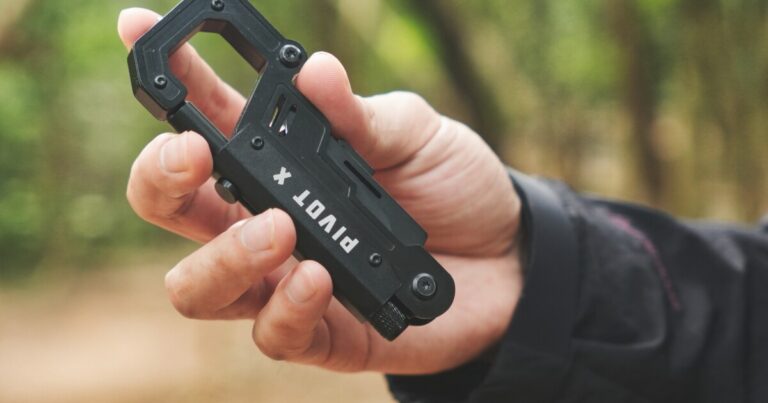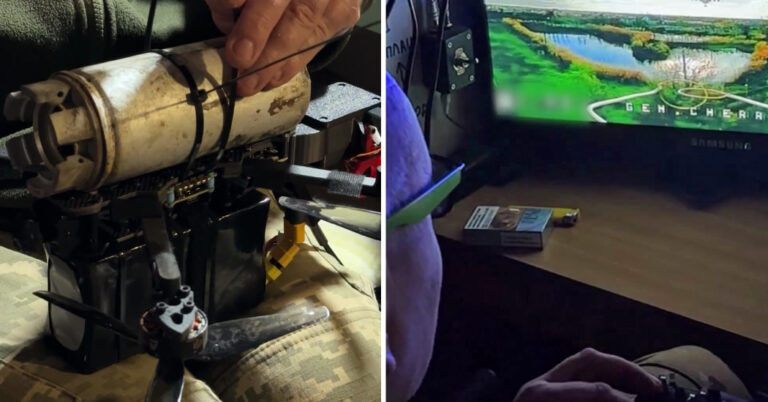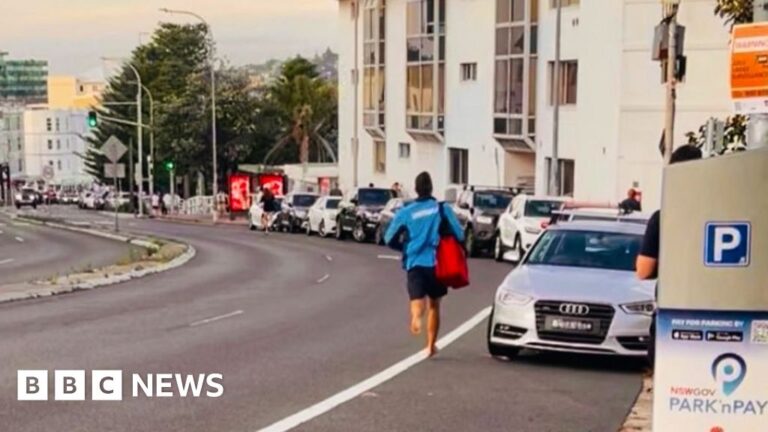Craig Kallman‘s journey in the music industry has come full circle.
The veteran A&R executive has just been promoted to Chief Music Officer at Warner Music Group, a role that will see him provide strategic A&R expertise across the company’s global operations.
He’s also reimagining Big Beat, the label he originally founded in 1987 and was acquired by Atlantic Records in 1991.
The appointment marks a significant evolution for Kallman, who spent nearly 35 years at Atlantic, including two decades as Chairman and CEO of the label, and most recently, as Chief Music Officer of the Atlantic Music Group.
During his tenure at Atlantic, he helped shape the careers of stars including Bruno Mars, Cardi B, Lizzo, Wiz Khalifa, Kodak Black, and Lil Uzi Vert.
Now, based in New York and reporting directly to WMG CEO Robert Kyncl, Kallman will work across WMG’s portfolio – including Atlantic Records, Warner Records, Warner Chappell, Rhino, ADA, and the company’s catalog acquisition initiatives.
“I’m incredibly excited to be able to plug into all the different divisions of the company and really be helpful creatively on every level,” Kallman tells MBW from his office in New York, against a backdrop of a portion of his vast collection of records (over 2.2m at last count).
His expanded remit includes identifying signing opportunities for WMG’s labels, scouting M&A opportunities for the company’s $1.2 billion joint venture with Bain Capital, and working with international territories to identify emerging trends and talent.
“My whole career, I’ve always tried to find unique artists that were doing something different.”
The first signing under the reimagined Big Beat is Elkan, a Sierra Leone-born artist and producer who produced Drake and PartyNextDoor’s hit NOKIA. Elkan released his debut EP, The Baby Bundle, on December 12 via Atlantic Records.
“As my first signing, Elkan is a statement of intent,” says Kallman. “He’s uncategorizable – you cannot pigeonhole him into any one thing.”
That search for “uncategorizable” talent reflects Kallman’s broader approach to A&R, which emphasizes instinct and artistry in identifying unique artists.
“I’m definitely trying to look as much as I can where no one else is looking,” Kallman explains. “My whole career, I’ve always tried to find unique artists that were doing something different.”
Here, Craig Kallman discusses his new role at Warner Music Group, his vision for “Big Beat 3.0”, why long-term artist development must remain a priority for major labels, and the global markets he’s watching most closely…
How does it feel to step away from your singular Atlantic focus into this wider strategic role at WMG?
It’s a real elegant, full-circle moment for me. I started as an indie label guy – as DIY as it gets – in 1987, and built [Big Beat] up until 1991. Then I was very fortunate to have [Atlantic co-chairs] Ahmet [Ertegun] and Doug [Morris] bring me in and buy the company. Being able to be mentored and learn under those two, and then spend the next 34 years at Atlantic, was an incredible journey.
“Elkan is really one of the most creative and, for me, one of the most exciting signings of my career.”
The opportunity that Robert [Kyncl] gave me – and [Atlantic Music Group CEO] Elliot [Grainge] – to reactivate and reimagine Big Beat at the same time is going to be a fantastic new 3.0 [era] for Big Beat. I’m just over the moon about the first artist that I’ve signed, Elkan. He’s really one of the most creative and, for me, one of the most exciting signings of my career.
Tell us about Elkan. What did you see in him that made him the right statement of intent for this new era of Big Beat?
I met him originally a couple of years ago as a producer. I heard literally one song that got me very intrigued because it was a really unique and creative production. I flew him to America to meet him and get in the studio with him. We spent pretty much all night in the studio from about 11pm till about four in the morning, just listening to his music, talking about music, and we just hit it off.
“I HAD NO IDEA HE WAS AN ARTIST. THE MINUTE HE PLAYED ME HIS SONGS, [HE] KNOCKED ME OFF MY CHAIR. THIS KID IS A GENIUS.”
I had no idea he was an artist at the time – I just knew him as a producer. But [months later] he says, “Oh, by the way, I’m an artist, I want you to hear what I’m doing,” and [he] knocked me off my chair. I mean, it was literally like, “Oh my God, this kid is a genius,” and a true one-of-one. It was incredibly creative, and unlike anything I’ve heard – uncategorizable. You cannot pigeonhole him into any one thing.
It was one of those [moments where it’s like], “You can’t leave the building, we’ve got to do this.” Fortunately, he felt like he really wanted to be with me, so it was a great union. I think it’s going to be a big year for him in 2026.
Are you looking for more ‘uncategorizable’ artists like Elkan? What’s the A&R strategy for Big Beat moving forward?
100%. I’m definitely trying to look, as much as I can, where no one else is looking. My whole career, I’ve always tried to find unique artists that were doing something different, whether it was finding a producer unlike anyone, or recording artists that had really special, unique qualities.
I’ve been able to shine and identify talent early, and then we put our helmets on and start bashing through walls for the artist on both a creative level, an A&R level, and on the marketing level.
That’s definitely how I’m looking at Big Beat 3.0 – to really [look] where no one else is going.
In terms of genre, are you focusing on anything specific, or is it completely agnostic?
100% genre agnostic. I’m looking at hard rock things, alternative rock things, pop things, R&B, hip-hop, dance music – across the board. I’m really looking to be very multi-genre and tasteful and hopefully [find] some unique-sounding artists.
Big Beat signings will go through either Atlantic or Warner Records. How will you decide which label works on which artist?
I’m in a fortunate position to be able to work with both companies and see who’s most excited about things.
If neither is excited, I can bring it through ADA, our [independent] system, and develop it until they’re ready. I have lots of options and avenues, which is great, to have the versatility and the agility inside the company to build a new roster.
Turning to the Chief Music Officer role – practically, what does that look like day-to-day? Will you be sitting in on A&R meetings across the different divisions?
Since this just recently started, I’ve been sitting with [Warner Chappell Music CEO] Guy Moot and Elliot [Grainge] and [Warner Records Co-Chairman & CEO] Aaron [Bay-Schuck], Tom [Corson, Warner Records Co-Chairman & COO], plus [Global Catalog President] Kevin Gore and [ADA President] Alejandro [Duque] for ADA and the Latin division.
I’m really finding the ways in which I can be helpful and add value – whether it’s helping sign artists, bringing artists to the labels that I’ve identified that might not be right for Big Beat, and helping on the songwriter side [by] identifying things for Warner Chappell.
“I’M LOOKING FOR CATALOGS FOR US THAT MAKE SENSE ON A GLOBAL LEVEL, [AND] INTERFACING WITH ALL THE MAJOR TERRITORIES.”
[I’m also] finding catalogs. We have this new partnership with Bain [Capital] and a war chest there to actively search for catalogs. I’m looking for catalogs for us that make sense on a global level, [and] interfacing with all the major territories as well.
Looking across Warner Music Group’s different labels and divisions, Where do you see the biggest opportunities in A&R capability that you want to amplify or address?
For me, it’s always trying to see what’s coming down the road and being ahead of the curve. An example is we [identified] the opportunities that were coming out of Africa [early on].
Being early on the Afrobeats genre, for instance, where we were able to sign Burna Boy at a very early stage, I think that’s still so key and intrinsic for all the labels inside Warner.
“IT’S TRYING TO FIGURE OUT WHAT’S COMING AROUND THE CORNER THAT WE NEED TO REALLY PLANT OUR FLAG IN AT THE EARLIEST POINT.”
The fact that [the labels are] run by real record men – Aaron and Elliot are both true, honest record men [who] fully understand what it means to sign things early and champion them.
It’s trying to figure out what’s coming around the corner that we need to really plant our flag in at the earliest point, and then roll up our sleeves and do the hard work to bring that to the public. [We want to] bring things that are genre-defining, boundary-breaking, [with] creativity at its height. Those are the fundamentals that have always been the cornerstone of how I’ve tried to [approach A&R].
You mentioned spotting things early and looking at opportunities globally, like with Afrobeats. What other markets or territories are you most excited about?
There’s interesting music coming out of so many different countries now. We’re seeing [developments] on the K-pop side and out of Japan – two major markets that are virtually the size of the European Union now.
As they are evolving to be extremely bilingual and often in English, those are two very potent territories. We’re going to continue to see a really interesting evolution of the music coming out of there that isn’t just your traditional boy band, girl band, pop factory types of artists. We’re going to see alternative artists and a wide cross-section of music coming out of there.
Obviously, India is a very interesting territory that’s making more and more inroads, certainly as it migrates from Canada down to the US as well.
“ELKAN is DEFINITELY GOING TO PUT SIERRA LEONE ON THE MAP.”
The continent of Africa as a whole is producing so much interesting music – not just West Africa and not just Nigeria, [but also] South Africa, Mali… Elkan happens to be from Sierra Leone, which is [a territory that hasn’t received as much attention]. He’s definitely going to put Sierra Leone on the map, let me tell you right now.
Everything that continues to evolve coming out of the Latin world is tremendously exciting.
Alejandro has done an amazing job on our Latin division, and now with him helming ADA at the same time… all of the Latin markets are producing incredibly rich, unique talent. Whether it’s Mexico, Puerto Rico, or Latin America, all of those territories continue to evolve, and we’re going to see many more unique things come out of [them].
You’ve built a reputation for long-term artist development. How do you protect that approach in today’s environment, where there’s increasing pressure on artists and A&R teams?
It’s a great question. I think it’s profoundly important that the majors, and certainly Warner Music Group, become even more known for [long-term development] than we’ve been in the past.
So many elements of the music business are being democratized, particularly distribution, and the competition gets wider and wider as distributors try to become more like majors and majors [lean] into wider distribution avenues beyond just the traditional ways that we sign artists…
“THAT’S WHAT’S GOING TO SET US APART – AND THAT’S WHAT’S GOING TO BE ATTRACTIVE FOR ARTISTS WHO ARE UNDECIDED ABOUT WHETHER THEY NEED TO SIGN TO A MAJOR OR NOT.”
That’s what’s going to set us apart – and that’s what’s going to be attractive for artists who are undecided [about whether] they need to sign to a major or not.
I think it’s one of the cornerstones and foundations of why an artist would want to sign to a major: because we have patience, because we have the ability to consistently invest in artist development, and also do that on a global scale.
Our reach and our financial ability to continue to invest as artists grow and blossom, and we give them sunlight and water; that’s what is going to continue to set us apart from all the other avenues that artists have as choices. It’s so important to the future of Warner Music Group, for sure.
What’s at the top of your to-do list as you go into 2026? What would you like to achieve by December 2026?
That Warner Music Group is the most potent company to break artists on a global scale and grow our existing artists’ fan bases on a worldwide basis. 2025 was a fantastic year for breaking new artists – both Warner and Atlantic did a tremendous job.
Continuing that winning streak and even enhancing and expanding the tear that Warner Music has been on this recent year is 100% the goal.
Having been able to hear a lot of the music that’s coming, I’m really excited about what’s coming next.
If you could change anything about the music industry going into 2026, what would it be and why?
The most overriding situation we all find ourselves in [regarding] the identification of new artists is [that] everyone has great data departments now. We’ve all got fantastic, brilliant people looking at the metrics of what’s moving, what has velocity, what is getting to first base or second base without us and then us jumping in. We’re all very often chasing the same things.
“WE NEED [TO RELY] A LITTLE LESS ON THE THINGS THAT HAVE VELOCITY… [AND MORE ON] RELYING ON ONE’S EARS AND ONE’S INSTINCTS.”
What is important is [to rely] a little less, necessarily, on the things that have velocity. There’s a huge role and opportunity there, but there’s also [the value of] relying on one’s ears and one’s instincts for believing in something and then throwing down, putting the X on the back, putting all the chips on the table, and backing it. We need more of that.
For me, that was honestly Elkan. I hope Elkan can become an example of how the tried-and-true A&R methods can still work alongside the more data-driven decisions.
Music Business Worldwide


















